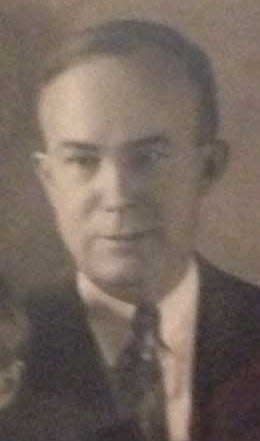Veteran's Column: Write describes Paris, Europe after WWI armistice
Second Lieutenant Frederick Sherwood Wright was serving with the 802nd Pioneer Regiment and arrived with his unit in France in September 1918. The unit was an African-American unit commanded by white officers. While in France, they were used as a labor unit primarily working on railroad construction. Though they were not considered a combat unit they did suffer casualties, 21 of the regiment’s men are buried in the St. Mihel American Cemetery and the Meuse-Argonne American Cemetery in France.

While in France, Wright was promoted to First Lieutenant. In an excerpt of a letter published on Oct. 31, 1918, in the Newark Advocate, Wright wrote his father; “This afternoon a bunch of Hun [German] prisoners came into town and while an officer was giving them their third degree, I gave them the ‘once-over’. They were quite content to be alive and prisoners, and were well fed, clothed, and not at all sullen and hateful like the three officers that had been netted with them.
Only at night do I get a breathing spell. One observation balloon was shot up back of us this afternoon, but the Bosche [Germans] was crushed within a few hundred yards of our camp. The balloon observers came down in parachutes. It’s a merry life…”
Just days after the letter was published, the armistice was signed on Nov. 11, 1918, and the war was over. On Feb. 4, 1919, The Advocate published another letter from Wright that he wrote on Dec. 26, 1918. The paper printed the lengthy letter under the headline, ‘Parisian Girl is Good Looking at Ten Feet Range.’
"Even if she is not the most beautiful girl in the world at 10 feet range she tricks you into believing it.” ‘Declares Lieutenant Frederick Wright of Newark in a letter to the Advocate describing the Parisian Mademoiselle which the Yankee soldier encounter on the streets of France capital while on leave.’ “They interweave the cosmopolitan throng in Paris like dandelions on a lawn. She is smiling, chic, and made up of perfection. Art has traveled a long way since Mother Eve hung on two fig leaves on that first Monday morning. Of course, the war is finished as is generally admitted, and most of the troops have either moved up into Germany with the army of occupation and are absorbing Moselle wine and cabbage in its many camouflaged forms or are disgustedly policing up the territory over which we fought during the fall. It is astonishing how much plunder an army can leave in its wake, and for several weeks now we have been salvaging everything from shirts and socks to gas shells and German 77s. Certain companies are given an ‘a-reea’, as our captain terms it and we rummage deserted dugouts, prison camps, and battery positions, burying dead horses and Huns, and carrying the ‘valuables’ out to the road where truck companies take them and deliver them to dumps on the rejuvenated narrow or standard gauge [railroads]. Here the stuff is sorted and sent to various cities where the clothes are de-loused, cleaned, and stored: ammunition assorted into varieties and put into arsenals for the next war, and the field pieces shipped to appropriate display sites where later the thrifty French will be charging two francs to the gaping tourists for a squint at the fruits of victory.” To be continued.
Doug Stout is the Local History Coordinator for the Licking County Library. You may contact him at 740-349-5571 or dstout@lickingcountylibrary.org. His book "Never Forgotten: The Stories of Licking County Veterans" is available for purchase at the library or online at bookbaby.com & Amazon.com
This article originally appeared on Newark Advocate: Veteran's Column: Write describes Paris, Europe after WWI armistice
